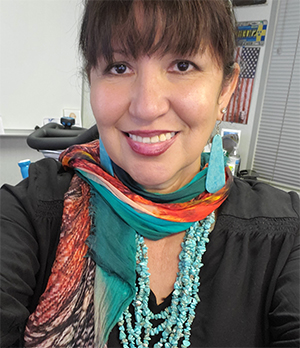National Fentanyl Awareness Day is recognized this year on May 9. The IHS observes this day to spread the word and educate tribal communities about the growing fentanyl crisis and how we can aim to reverse its tragic outcomes. Fentanyl remains a crisis in Indian Country and exposure can lead to overdoses and deaths.
Fentanyl is a potent synthetic opioid used for treating patients with pain. It is 50 to 100 times more potent than morphine. Due to its potency, very small amounts of fentanyl can cause damage to the brain and lead to overdose or death. There are two types of fentanyl: medical grade, which is prescribed by a doctor; and illicitly manufactured, which is produced and distributed through illegal drug markets. Illegally and illicitly manufactured fentanyl and its dangers are largely unknown to the general population and even more so to the most vulnerable populations, including youth and young adults.
In 2022, the CDC reported that the American Indian and Alaska Native population had the highest drug overdose death rates in both 2020 and 2021, at rates of 42.5 and 56.6 deaths per 100,000 persons. This includes a 33% increase in drug overdose deaths from 2020 through 2021. Tribal communities are experiencing an increase in overdoses stemming from polysubstance use. This is primarily caused by unintentional polysubstance use, which is when a person who takes drugs mixed or cut with other substances, like fentanyl, without their knowledge.
The IHS Division of Behavioral Health provides resources to tribal and urban Indian communities to help combat fentanyl in the form of grants, technical assistance, education and webinars. The IHS Community Opioid Intervention Pilot Project grant initiatives aim to implement innovative approaches to address the opioid crisis in Indian Country through the following objectives:
- Increase public awareness and education about culturally appropriate and family-centered opioid prevention, treatment and recovery practices and programs.
- Create comprehensive support teams to strengthen and empower American Indian and Alaska Native families by addressing the opioid crisis.
- Reduce unmet treatment needs and opioid overdose-related deaths through the use of medication assisted treatment.
Another way to combat the fentanyl crisis is through the use of naloxone, a medication that can temporarily reverse an opioid overdose and save lives. Several easy-to-use devices can quickly administer this medication. Family members, caregivers, and emergency responders should be trained to administer naloxone to populations at risk for opioid overdose. We encourage everyone to learn more about naloxone on the IHS website, including a Naloxone Training Toolkit for medical professionals, first responders, and community members to use to become official naloxone trainers.
Related Content



